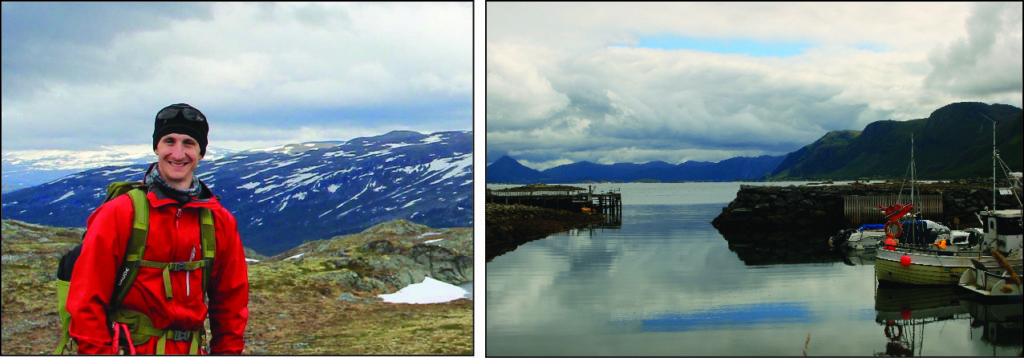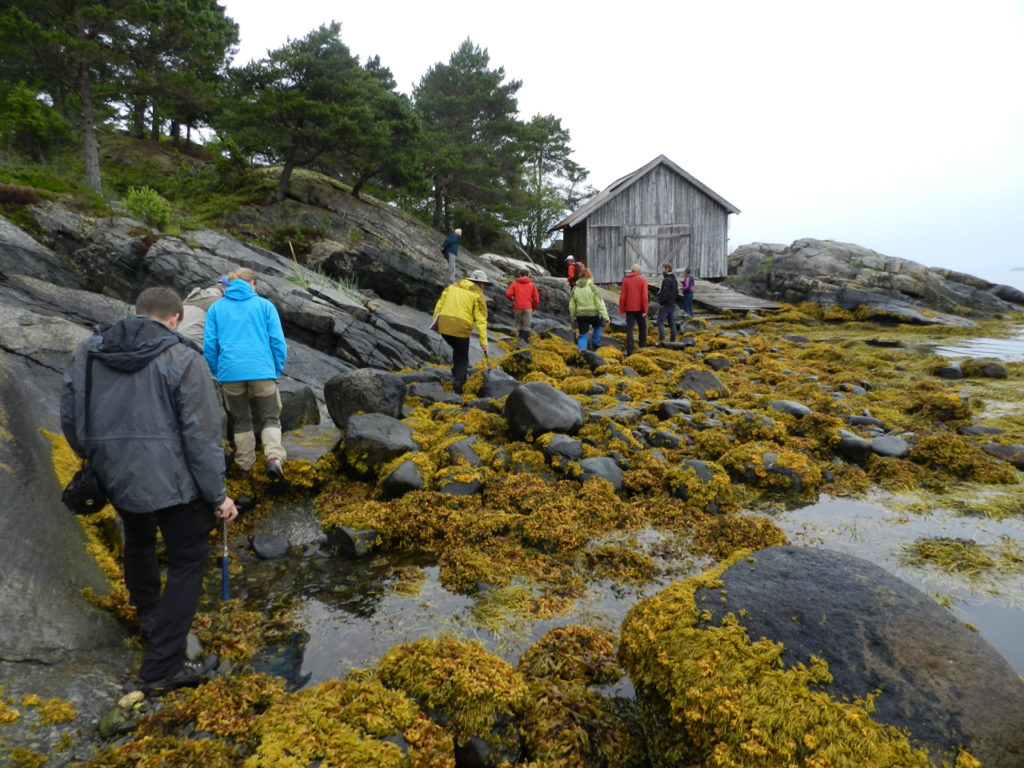Jamie Cutts is a Ph.D. candidate in Geological Sciences in the Department of Earth, Ocean and Atmospheric Sciences at the University of British Columbia and is doing research at the Pacific Centre for Isotopic and Geochemical Research (PCIGR). You can read about his research on his department profile or follow him on twitter @JamieCutts_Geo.
My research career thus far has been focused on integrating petrology, geochronology, geochemistry, and field observations to address tectonic and lithosphere-scale questions in ancient orogenic belts. These projects have been focused on Appalachian ophiolites and Grenvillian syn-tectonic plutons in eastern and central Canada. My current research is focused on using relatively new geochronology techniques; Lu-Hf garnet, U-Pb laser ablation zircon/rutile geochronology to constrain timing and rates of metamorphism and cooling of subducted continental crust and slivers of the sub-continental lithospheric mantle that are exposed in the Western Gneiss Complex (WGC) of Norway.
In the summer of 2015, I had the immense privilege to have spent 3 weeks collecting samples for my Ph.D. research, followed by a 10-day field trip that took me on a transect across the Caledonian Orogen from Uppsala in eastern Sweden to Molde in western Norway. At the time, my Ph.D. research was in its nascence, and what better way to fully immerse myself in the regional geology than on a guided trip across this ancient mountain belt. And on top of that, it was a great opportunity to meet many fantastic people and scientists, some which are now collaborators! The trip was organised by the University of Uppsala, and the Swedish and Norwegian geological surveys, and was led by Drs. David Gee and Peter Robinson. On the trip were survey geologists, professors and graduate students whose interests ranged from geophysics, metamorphic petrology, structural geology, geochemistry, and paleontology. The diverse nature of the viewpoints and opinions in our group fueled many discussions and debates (often over evening drinks).

(left): Standing up on the plateau just North of Grotli, Norway, after a successful day of hiking and sampling; (right): Raknes-Tangen harbour looking SE towards the mountains on Otrøy island.
The Scandinavian Caledonian orogeny was part of a global-scale event that involved the collision of North America and Greenland (Laurentia), the United Kingdom (Avalonia), and Northern Europe (Baltica), and resulted in the eventual formation of the supercontinent Pangaea. During the closure of the intervening ocean, terranes of varying rock-type and provenance were accreted onto the Laurentian and Baltican margins. In the Caledonides, these terranes – termed the lower, middle, upper, and uppermost allochthons – occur as orogen-parallel belts that were thrust eastward by as much as 400 km onto the Baltican margin. There are also a number of tectonic windows of crystalline basement that are exposed in Norway, of which the WGC is the largest. The allochthons are described broadly as the following:
- The Lower Allochthon: low-grade (meta-) sedimentary rocks that represent fragments of the Baltican platform, rifted margin and foreland basins.
- The Middle Allochthon: Proterozoic gneisses, quartzite, amphibolite, and schists, that represent the outermost margin of northwestern Baltica (present-day coordinates).
- The Upper Allochthon: mafic (meta-) volcanic rocks that represent outboard terranes of oceanic affinity.
- The Uppermost Allochthon: remnants of the rifted Laurentian margin.

Swedish landscape around in the para/lower allochthons; (right) The view from the top of Åreskutan, Sweden as we neared the border with Norway.
Our trip began in Sweden, where the geology comprises the crystalline basement and sedimentary cover of the autochthon and parautochthon. It is truly amazing how much detailed work has been done in Sweden despite the lack of outcrop and the thickness of the forests that line either side of every road. Nevertheless, there are some well-exposed outcrops – typically in quarries or road-cuts – that have undergone low-degrees of deformation and metamorphism and thus are fantastic for studying the structural history in the area.

Examples of the deformed rocks in Norway (top) sheath folds in quartzite; (middle) boudinaged quartzite in host amphibolite; (bottom) mylonitized rapakivi granite.
Venturing westward, the topography rose dramatically as we approached the orogenic front and crossed into the allochthonous units. Our trip stops ranged from structurally spectacular quarry/cliff-faces that expose beautiful fold-cross sections to small, mineralogically remarkable road-cuts. We hiked up an impressive mountain of ultrahigh pressure gneiss that contains micro-diamonds and along the almost 100% exposed, glacially polished Norwegian shoreline. The rocks that we saw at these stops included extraordinarily preserved fossils and sedimentary sequences, beautiful low-grade pillow-basalts in a mineralized ophiolite, and ultra-high pressure schists, gneisses, eclogites, and peridotites that have been subducted to mantle depths. This really was a trip that could have been of interest to any geoscientist.

Some of the trip crew scrambling along the slippery Norwegian shoreline in search of deformation. Photo credit: Jane Selverstone.
Throughout this excursion, I was struck by the similarities between the Swedish and Norwegian landscapes and the places in Canada that I have visited throughout my career in geology and otherwise. In Sweden, the rolling, densely forested hills that are dotted with lakes was reminiscent of where I grew up in the Canadian Shield of Ontario and Quebec, while the rugged shoreline and sheer cliffs of the western fjords of Norway were strikingly similar to the glacially carved Western Brook pond in Newfoundland. It was comforting to be surrounded by familiar landscapes.
I had such an incredible experience doing fieldwork in Scandinavia that I wish I hadn’t done such a good job at collecting samples that summer so that I could return for another season! Luckily, I will have the opportunity to re-visit the area after attending the International Eclogite Conference in Sweden in August of 2017. It will be refreshing to return after having been working on my research for the past 2 years. I’m sure the experience will be just as spectacular as the first time around!
![]() This work is licensed under a Creative Commons Attribution-NonCommercial-ShareAlike 4.0 International License.
This work is licensed under a Creative Commons Attribution-NonCommercial-ShareAlike 4.0 International License.

